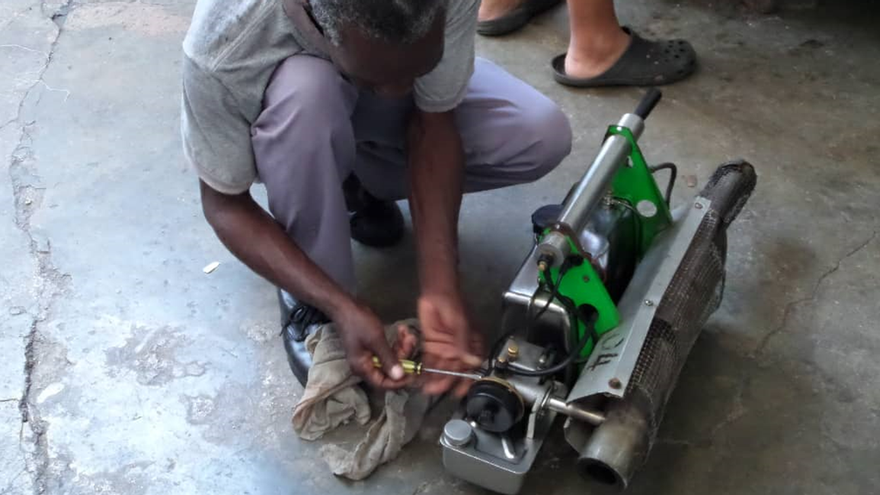
![]() 14ymedio, Santiago de Cuba, 28 December 2020 — Despite the arrival of lower temperatures and a decrease in rainfall, Santiago de Cuba has reported an increase in dengue fever in recent months, caused by the presence of the Aedes aegypti mosquito, the transmitting agent of the disease.
14ymedio, Santiago de Cuba, 28 December 2020 — Despite the arrival of lower temperatures and a decrease in rainfall, Santiago de Cuba has reported an increase in dengue fever in recent months, caused by the presence of the Aedes aegypti mosquito, the transmitting agent of the disease.
Dengue fever, together with the increase in those infected by Covid-19, complicates the epidemiological situation in the province, but the anti-vector campaign against the mosquito has lost strength. If a few years ago, the so-called ’breakbone fever’ was a constant protagonist in the national media, now the fight against this scourge is losing ground.
Local authorities have blamed the increase in the disease on residents of the province who, given “the low perception of danger… dump garbage on public roads and fill their yards and the areas around their homes with solid waste where water accumulates and this constitutes a breeding ground for Aedes aegypti mosquito.”
In the official press, the authorities constantly repeat that the Ministry of Public Health is committed to “the well-being of the Santiago population” and the “sector has all the personnel and resources necessary to combat Aedes aegypti.”
However, independent media and Santiago residents have denounced landfills and outbreaks in state institutions that are the responsibility of the Government, which must ensure communal sanitation and the eradication of environmental risks.
To this panorama, it is added that the workers of the anti-vector campaign must struggle to start the fumigation equipment due to the poor condition of many machines, which are in need of maintenance. In addition, the significant fuel shortages on the Island prevent successful fumigation cycles.
Between September and last October alone, the province reported the majority of cases in the municipalities of Contramaestre, Mella, Palma and Santiago de Cuba. Although the regime almost never offers exact data on this disease or talks about the number of patients admitted, much less the numbers who die, Sierra Maestra published that September had 360 more infections than August.
____________
COLLABORATE WITH OUR WORK: The 14ymedio team is committed to practicing serious journalism that reflects Cuba’s reality in all its depth. Thank you for joining us on this long journey. We invite you to continue supporting us by becoming a member of 14ymedio now. Together we can continue transforming journalism in Cuba.
